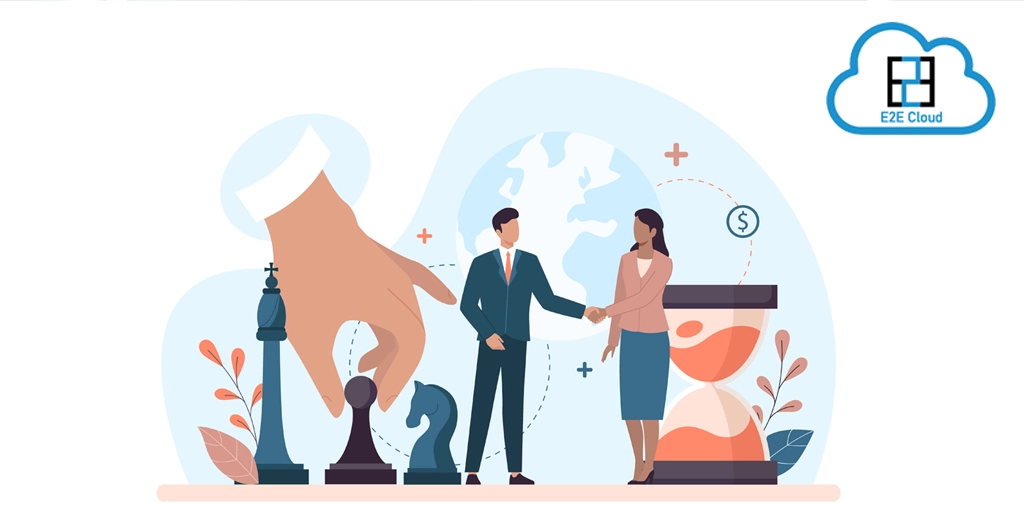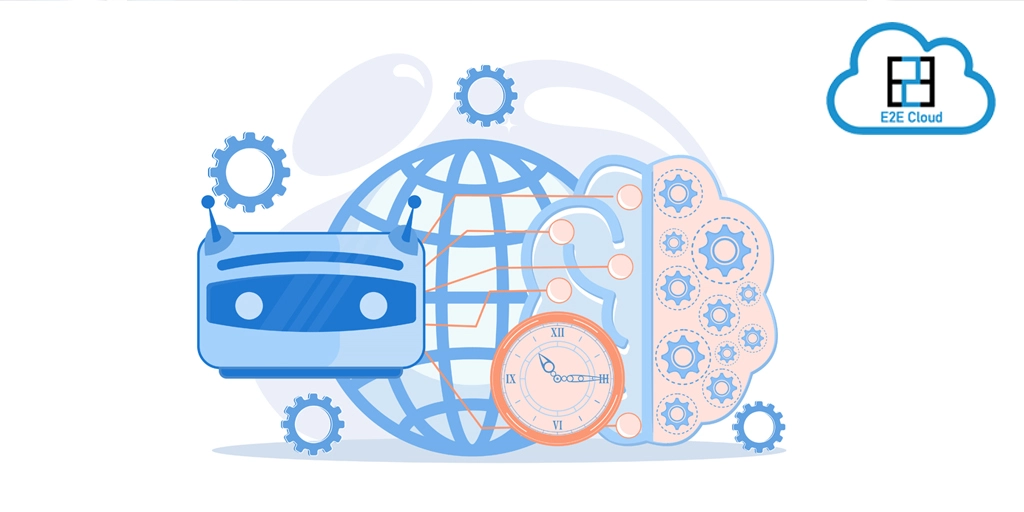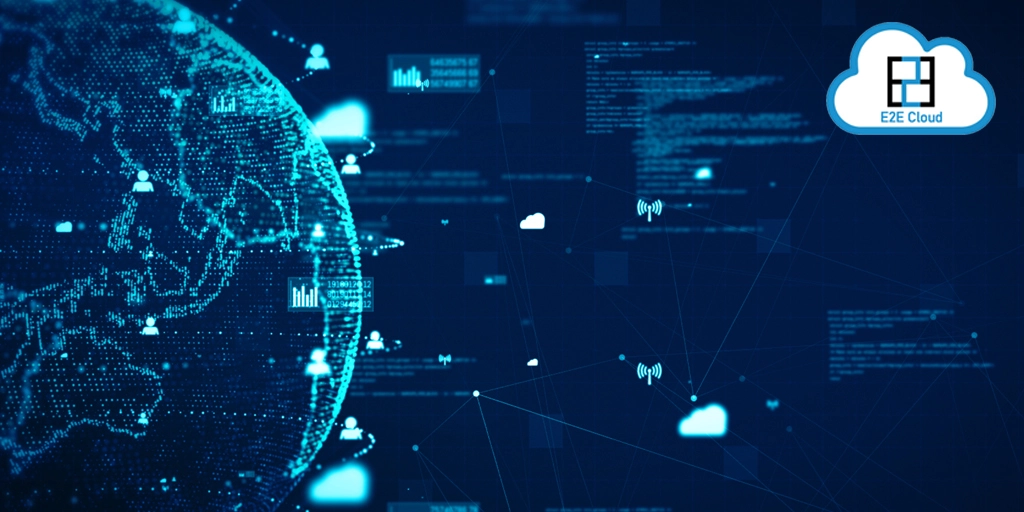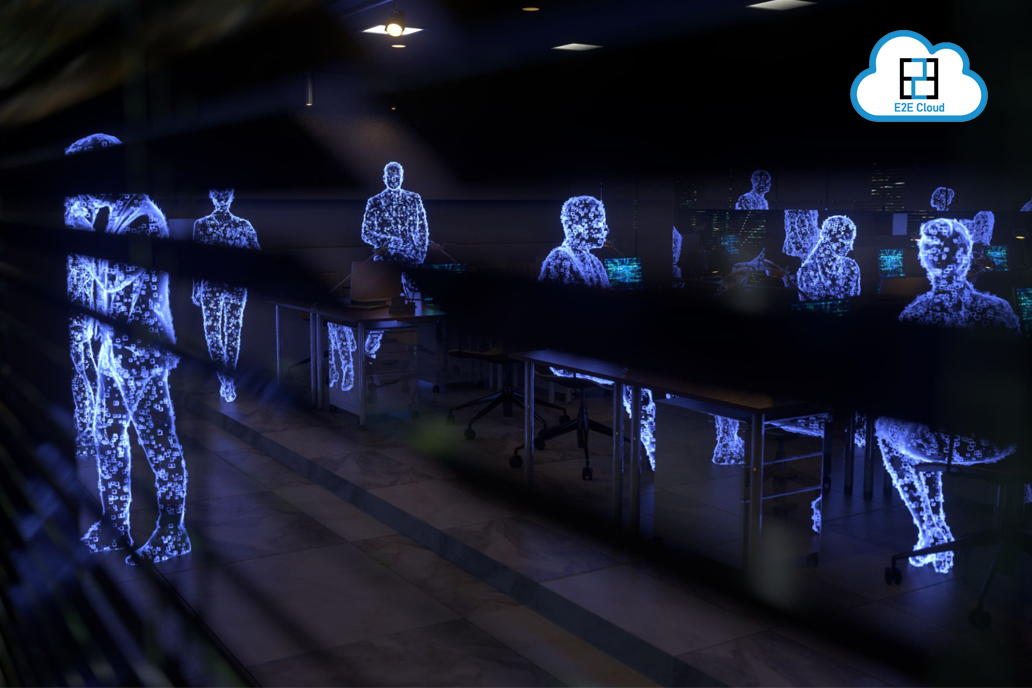E2E Cloud is excited to introduce Mr. Ramdas, MD, Netzary Infodynamics who joined us on 17.11.2022 to share his insightful opinions on the topic “Demystifying Kubernetes Deployment on E2E Cloud”. We were glad to collaborate with him and his vision to implement Kubernetes for successful deployment of multiple applications. He is experienced in this domain for 20 years now and could tell what are the valuable advantages of using Kubernetes.
Let’s have a look at what all he wanted to convey:
What is Kubernetes? How was it launched?
Kubernetes is a portable, extensible, open source platform for managing containerized workloads and services, that facilitates both declarative configuration and automation.
In 2000, we used to have app servers, when the applications used to run on bare metal servers with an operating system and underlying hardware.
Ex: Karnataka state education board used to run their applications on a bare metal server. So,E every time the workload increased, they had to increase the number of servers and the machines used to crash. It became very difficult, they didn't have tools to manage the infrastructure.
In 2006, virtualization happened. Virtualization is a reality-based toolset that lets you best manage through changes in the process of deployment from one technology to another. Cloud-based businesses also have reasons to appreciate virtualization. They usually get a Kubernetes service from their cloud provider, which solves a great deal of complexity.
In 2015, containerization has become an eminent part of deploying multiple applications, With Kubernetes, server CPU utilization increased from 25% on average. Kubernetes saves your money. Containerization in Kubernetes is the utilization of the Kubernetes open source tool to automate the deployment, scaling, and management of containers without launching virtual machines for any applications.
Over the past 20 years, 15 new generations of servers have been launched. As with all the technology, servers need to be replaced and/or upgraded at some point. There will come a point when they're no longer fit for purpose and don't meet the needs of your company. However, it's up to you to decide what your options are. In general, servers are expected to last between five and eight years, so it's a good rule of thumb to start thinking about replacing them around the five-year mark. However, there is a good range of variables to take into account that could shorten the life of your server.
Kubernetes History:
In 2014, Kubernetes was open sourced by google after 15 years of google running thousands of servers and services in-house.
In 2021, the USD market of servers was 1.7 billion. It is now expected to reach 5.7 billion by 2028. According to a recent study by Sogeti research, server CPU utilization improves from 25% on average to 70% from classic VMs to Kubernetes clusters reducing carbon footprint.
Since 2002, there have been huge average performance improvements across various components of networks. Let’s see in particular:
CPU: From 1 core to 192 threads.15 new generations of processors.
Drive: 180 iops to 300k iops
RAM: From 233 Mhz to 4000 Mhz. 5 new standards have emerged.
Network: 1 gbps to 400 gbps
Why Kubernetes?
Kubernetes' advantages are being highlighted by containerization. From the perspective of a computing platform, CPU utilization is a key goal. It is the direction where computing is taking us today.
Instead of running a few applications, you can run many apps via Kubernetes. One of the main challenges we have is that we do planning for infrastructure for deployment of applications. But we have to plan for a spike.
Consider a scenario where there is a truckload of traffic out of any reason, there are high chances of web apps getting crashed as the spikes are unpredictable.
Kubernetes allows a developer to automate software deployment. It lets the developer curate, position, control, and gauge application containers. This deployment could be across a single host cluster or more than one. In other words, it is a container orchestration system.
Given below are the important components of Kubernetes -
- Kubernetes data plane– It helps to run the workloads that have been kept in containers.
- Kubernetes control plane– The data plane helps in the management of all the Kubernetes clusters and their workloads.
- Pods – Small functional units in Kubernetes for managing micro-service workloads.
- Persistent storage– Local storage is temporary in Kubernetes. It provides persistent space for storage even after the lifespan of a pod.
How is Kubernetes helping in deployment?
- Embracing Micro services: Container Integration & access to storage resources with different cloud providers make development, testing & deployment simpler.
- Adopting DevOps Specs: Creating container images which contain everything an application needs to run making it more easier & efficient than creating virtual machine images.
- Container Orchestration: Kubernetes automatically provisions & fits containers into nodes for the best use of resources.
- Ubiquitous Load Balancing: Kubernetes load balancers spin up new pods, instances depending on the traffic, workloads and even system resources.
- Go Multi-Cloud: Kubernetes allows migration of containerized applications from on-premises infrastructure to hybrid deployments across any cloud provider’s public cloud or private cloud infrastructure.
- Portability & Less Lock-ins: Kubernetes supports infrastructure (public cloud, private cloud, as long as the host OS is the version of Linux or Windows), it works virtually with any type of container runtime.
Applications that can use Kubernetes:
- High Traffic Websites.
- Mission Critical business applications.
- IOT Applications.
- E-commerce Applications
- AI, Machine Learning & Big Data Apps.
- Edutech, Fintech and Utility Apps.
Important factors while choosing Kubernetes as a service:
- Avoid setting up kubernetes on your own.
- Always use kubernetes as a service which is managed by the cloud provider itself.
- Always use a shared storage.
- Make sure all your dependencies are well tested.
- You should have a strong testing plan in place.
Why E2E Kubernetes Service- EKS?
- There aren’t any extra/hidden costs.
- Transparent and easy to understand billing.
- You will have access to a friendly team and there is personalized support.
- You can reduce your cost spend up to 60% by shifting to EKS from a hyperscaler.
Considering all the above information, We believe you should try EKS and see how it is solving your deployment workloads.
Connect with us: sales@e2enetworks.com
Request for a free trial now:https://zfrmz.com/LK5ufirMPLiJBmVlSRml


.png)







